Rickman Honda CR750
With Ian Falloon
When Honda released the CB750 it set a new standard for performance and reliability but for many enthusiasts the Honda was too heavy, and the handling not up to the finest British standard. But while the handling was perhaps not up to scratch, the Honda was totally reliable and provided twice the recommended distance between spark plug and oil changes as a comparable Triumph or Norton.
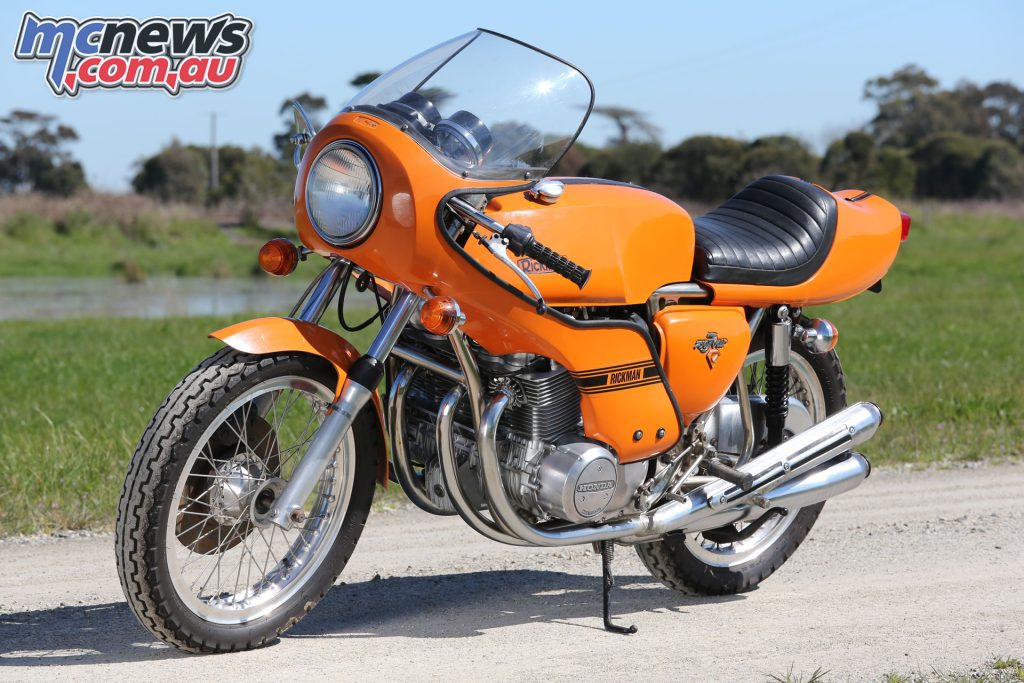
As Cycle World magazine said in July 1974, “Don’t sell that monstrous four-banger just because it wiggles like a wounded snake every time you think about tilting it from a vertical plane.” Salvation came from a new chassis for the existing Honda engine; and one of the best available was the Rickman CR (Café Racer or Competition Replica).
Despite offering a combination of impracticality and dubious comfort, the café racer’s popularity is enduring. With low handlebars and rear-set footpegs the café racer looked like it had wandered off the racetrack.
These racing style café racers eventually became so popular that by the 1970s most European motorcycle manufacturers were building them. A decade later the Japanese followed suit, and today the factory café racer is a mainstream model.
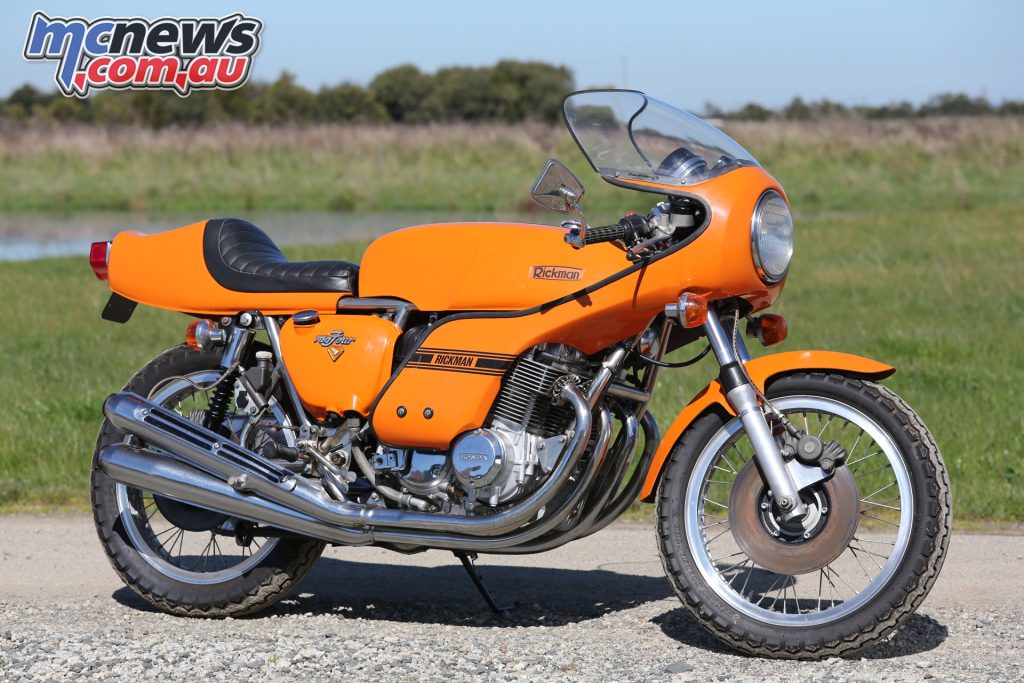
Unlike today’s sporting Superbikes, café racers were initially bespoke custom motorcycles. In the 1960s it wasn’t possible to buy a production motorcycle with clip-on handlebars, rear-set footrests, and a racing fairing. This created a market for aftermarket suppliers, and the Rickman brothers, along with Paul Dunstall and others, were at the forefront.
Derek and Don Rickman began racing motocross in the 1950s with a Triumph twin in their own frame. They were successful international motocross racers and christened their machine the Metisse, a Gallic expression signifying a mongrel bitch. What set the Rickman frame apart was the nickel-plating over the traditional Reynolds 531 tubing.
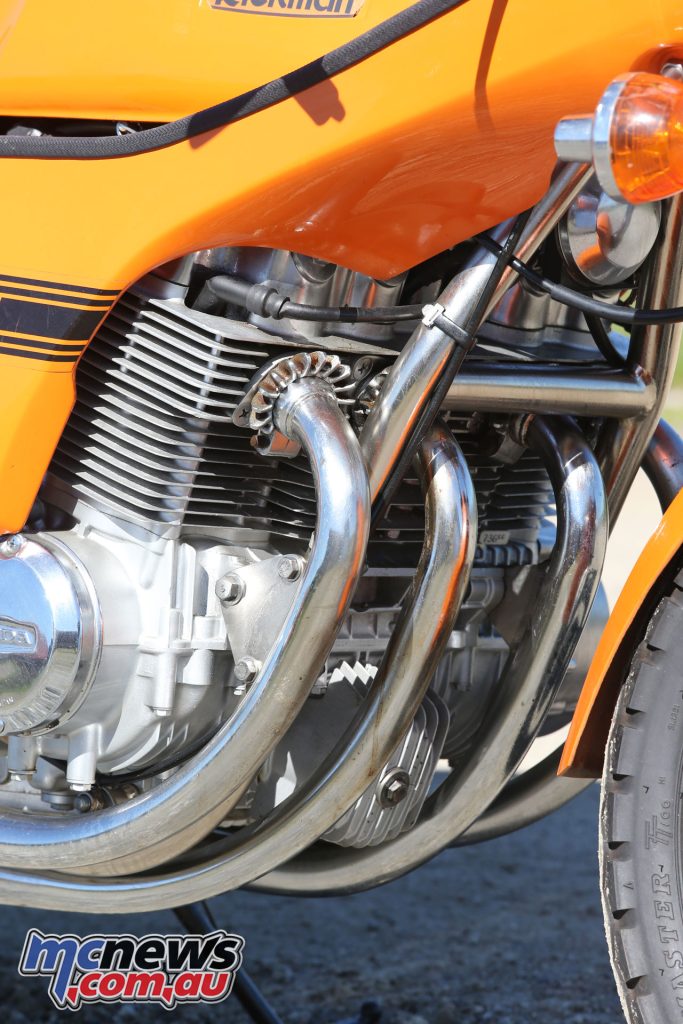
In 1962 the Rickman brothers established a frame manufacturing company in New Milton, Hampshire. They continued to race motocross, Derek winning the 1966 500 cc European motocross championship, and Don the British Motocross Grand Prix. The Rickmans were as talented at fabrication and tuning as they were riding and by 1966 they had branched out into road racing, offering chassis kits for Triumph twins and AJS 7R and Matchless G50 racing singles.
As they were lighter, held their oil in the frame and featured a beefy 41.2 mm front fork, the Rickman handled even better than the revered Norton Featherbed benchmark. After developing an eight-valve cylinder head for the Triumph twin in 1968, Rickman then bought 138 unsold Royal Enfield 750 Interceptors in 1970, and created the Rickman Interceptor. This was the first production motorcycle with disc brakes front and rear.
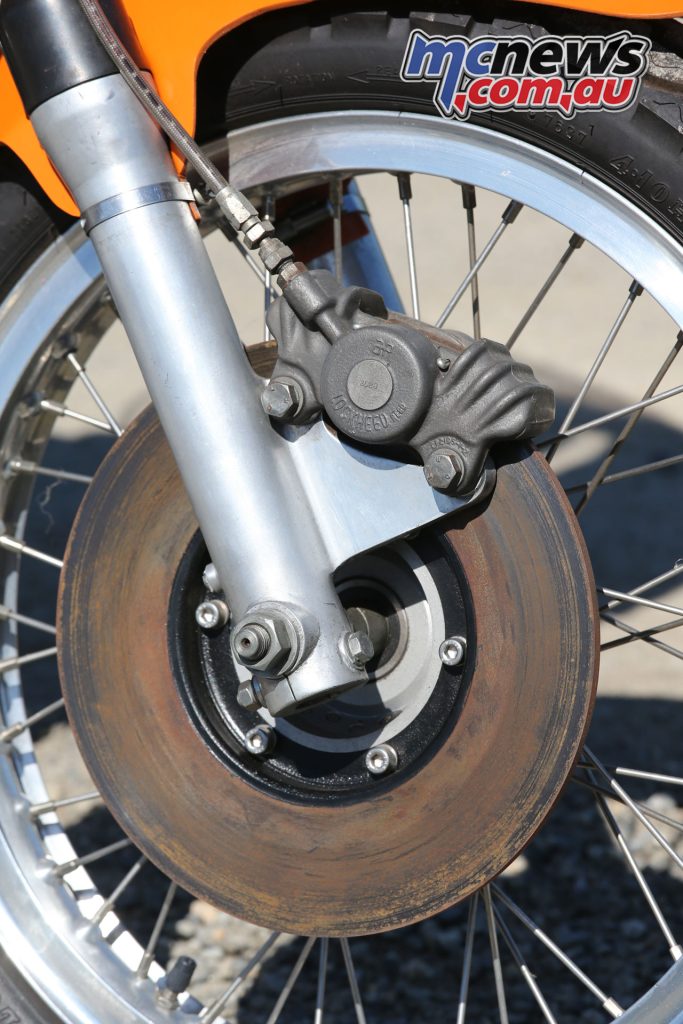
In 1974 the Rickman brothers branched out from racing and offered a CR kit for the CB750 Honda. This kit included the best quality components available. The frame was built in Reynolds 531 manganese chrome-molybdenum, and Avon supplied a bright orange 29-litre fibreglass tank seat and fairing.
Rickman sourced the best they could find from British and European suppliers, including Italian Borrani 18-inch alloy wheels with British Dunlop TT100 tyres, Girling shock absorbers, Lockheed disc brakes, and a hefty Spanish Betor front fork. The kit came with all fasteners and stainless steel foot controls but you needed a donor Honda CB750 four, complete with carburettors, air filters, exhaust system, wiring loom, instruments and controls, and side and centre stands.
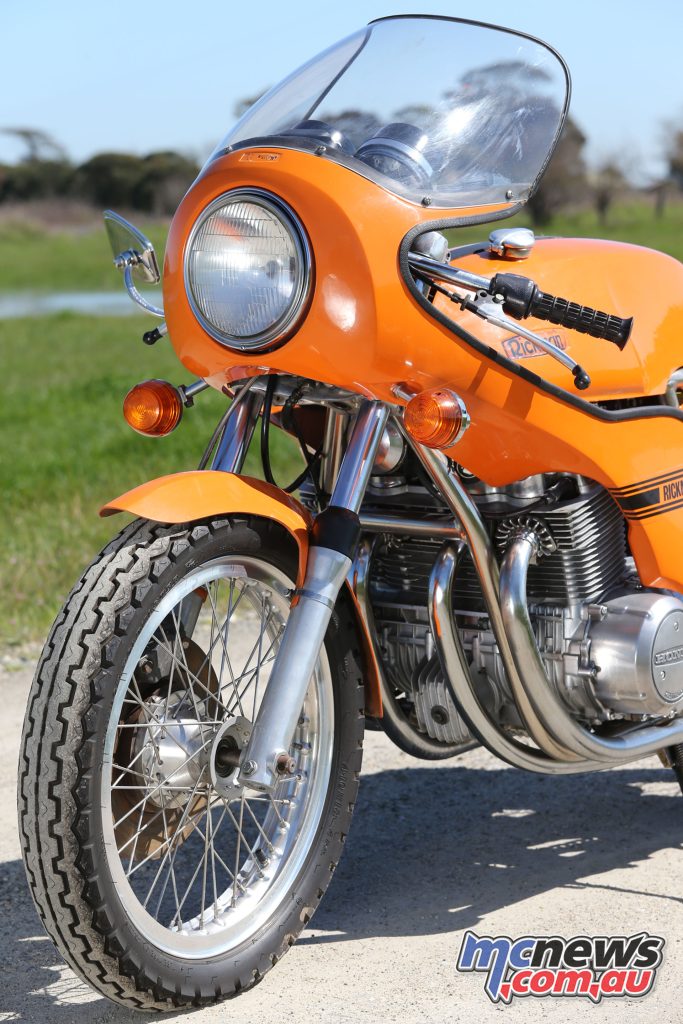
Rickman’s assembly instructions proudly proclaimed, “The stock Honda parts bolt straight on without modification. No drilling or welding necessary.” However, if you wanted to retain the stock gearshift pattern the gear lever for the rear set linkage required cutting and welding. But from all accounts the assembly process was otherwise as straightforward as expected.
A claimed six and a half hours later your Honda CB750 could be transformed into the Rickman CR750. This was a lower, better handling, better braking sporting motorcycle that at 199 kilograms weighed 20 kilograms less than the original. Not only was the Rickman considerably lighter, it offered an extremely punishing café racer riding position, with particularly low handlebars and a high seat.
In addition to providing functional superiority, the gleaming nickel-plated Rickman frame was a thing of beauty. Constructed as a bespoke one-off custom, every joint was hand fitted, profiled and bronze-welded. The Rickman brothers also went to considerable effort to ensure their CR met with customer satisfaction, constantly updating the specification.
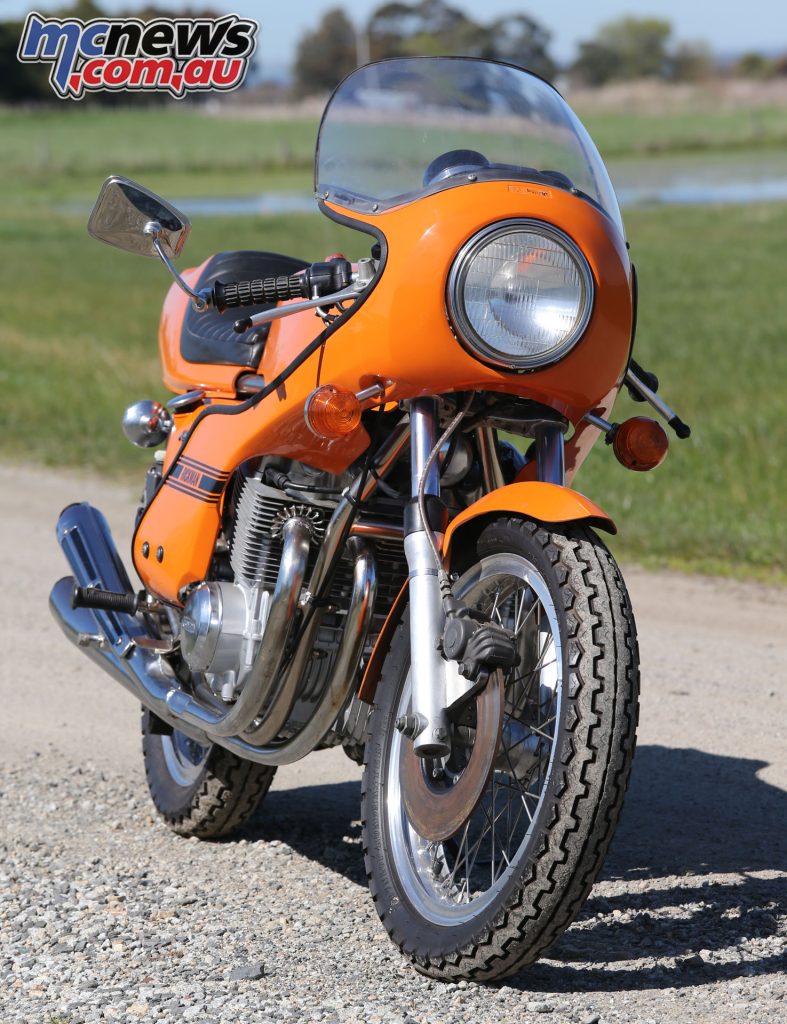
Following complaints that the chassis could corner beyond the limits of tyre adhesion available in 1974, they changed the original rigid phosphor-bronze swingarm bushes for a new wear resistant silent bloc type that provided more feel. A longer swingarm was also optional.
In 1975 the CR range was expanded to include a kit for the Kawasaki Z1, and by the end of the 1970s Rickman had incorporated dual front disc brakes and cast alloy wheels. As the early Rickman models were scramblers, Rickman had problems with rear wheel cush-drive assemblies on the Honda CR and Kawasaki CR. Kawasaki came to the rescue and supplied cast wheels to Rickman in 1977.
Thus some later Honda CR750s were fitted with Kawasaki cast alloy wheels. Despite its great looks the CR really only offered superior handling and braking over a stock Honda CB750 or Kawasaki Z1. With production numbering 12,000 a year (mainly off-road bikes), in the late 1970’s Rickman was the second largest motorcycle manufacturer in Britain.
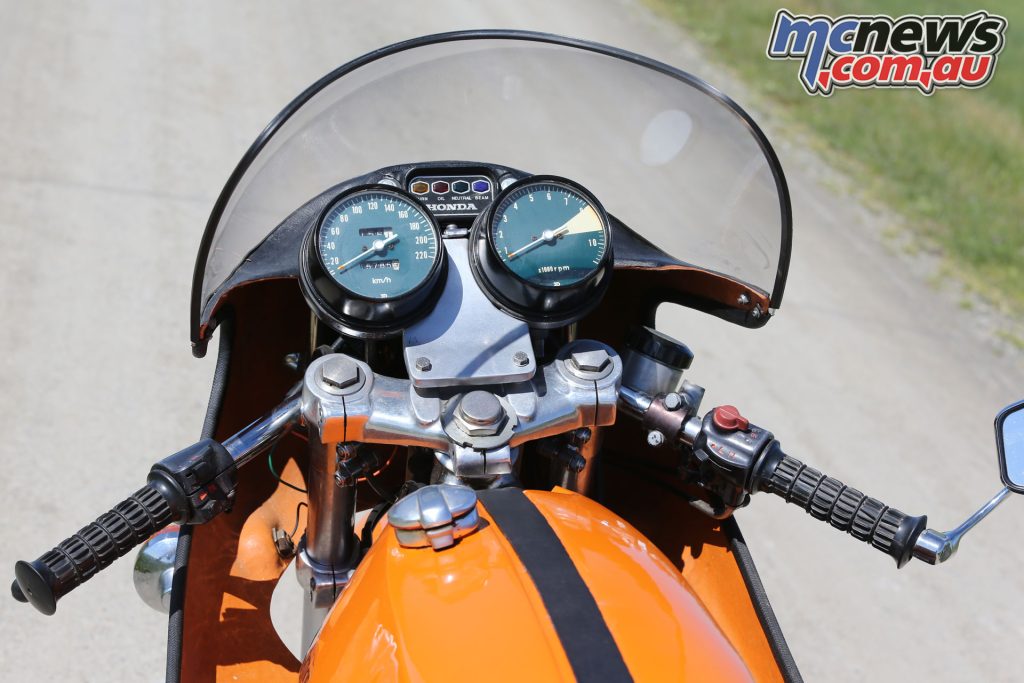
By the end of the 1970s the Japanese manufacturers finally sussed out how to make bikes that handled improve and the day of the do-it-yourself café racer kit was numbered. As only those who appreciated the quality of a hand-made nickel-coated frame, racing Lockheed twin piston brake calipers, and race-bred handling could justify the expense of the Rickman kits.
As demand dwindled Rickman turned away from the café racer to sport touring, and while they stopped the café kits in 1982, Rickman was still making the Kawasaki-powered Predator in 1984.
With about 1,000 made the Rickman CR750 kit was always a limited edition. Initially Alron Motorcycles in Perth imported them into Australia, but during 1977 Peter Stevens in Melbourne took over distribution.
As it cost the same as a new Honda CB750 and you had to provide the engine and electrical system, the Rickman kit was extremely expensive. But in the 1970s it offered the best of both worlds; the highest quality British chassis with Japanese reliability.
The Rickman wasn’t designed to be the best for a given price, but to be the best. Rickman claimed “Performance and handling far beyond that of mortal bikes” and the CR delivered.
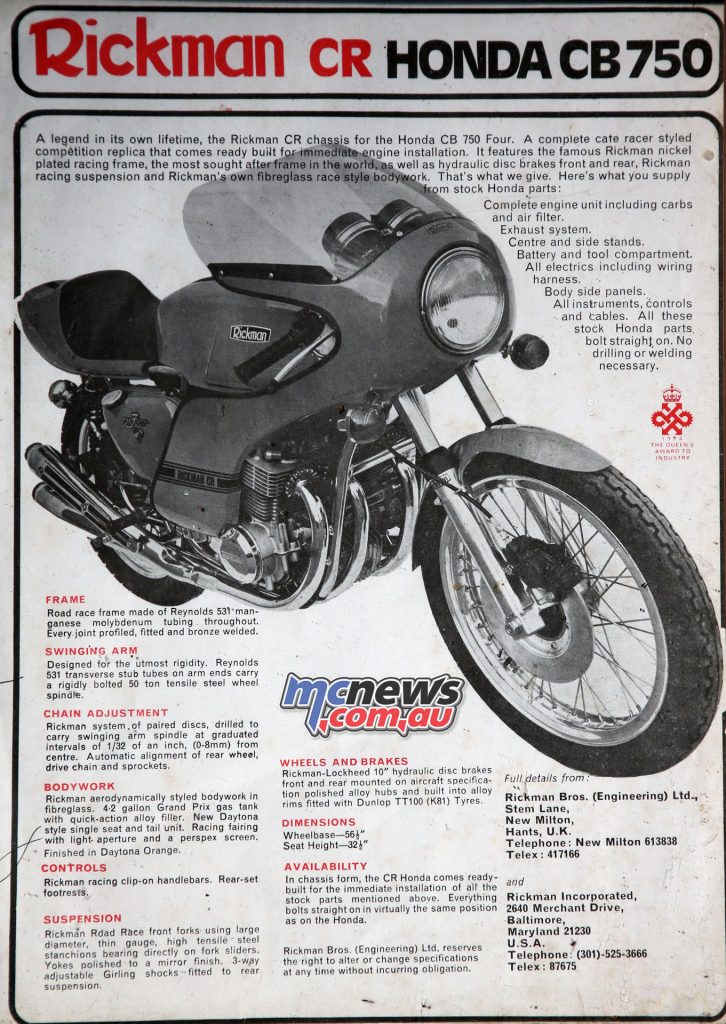
1975 Rickman Honda CR750 Specifications
| 1975 Rickman Honda CR750 Specifications | |
| Engine | Four stroke, transverse four cylinder, SOHC, two valve per cylinder |
| Capacity | 736 cc |
| Bore x Stroke | 61 x 63 mm |
| Compression Ratio | 9.2:1 |
| Cooling System | Air cooled, |
| Induction | Four 28 mm Mikuni carbs |
| Ignition | Battery induction coil |
| Starting | Electric |
| Max Power | 69 hp @ 8000 rpm |
| Transmission | Five-speed |
| Final Drive | Chain |
| Front Suspension | Betor telescopic fork |
| Rear Suspension | Swingarm with dual shocks. |
| Front Brake | 254 mm Lockheed disc |
| Rear Brake | 229 mm Lockheed disc |
| Front Tyre | 4.10-18in Dunlop K81 |
| Rear Tyre | 4.85/85-18in Dunlop K81 |
| Dry Weight | 218 kg |
Check out more historical motorcycle articles by Ian Falloon here (link).























